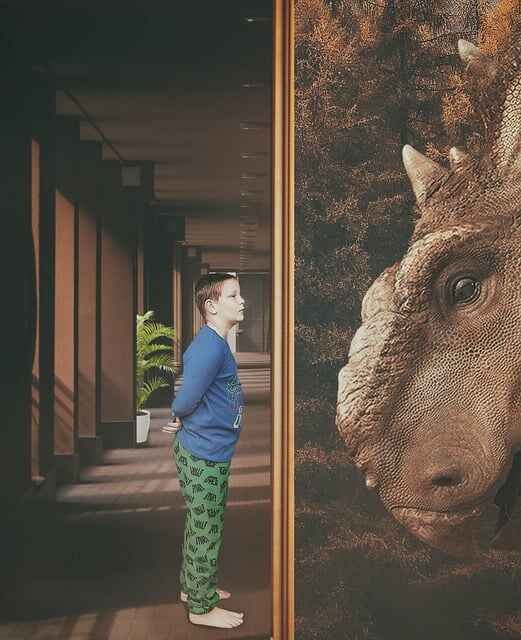A Journey Through the Historical Time Periods: Exploring the Key Eras in Human History
Human history is a captivating tapestry woven with various periods, each marked by distinct characteristics, achievements, and societal developments. From ancient civilizations to modern times, the different historical time periods have shaped our world in profound ways. In this article, we delve into some of the significant eras and their corresponding years, providing an overview of their key features.
We take a captivating journey through the major historical periods, spanning millions of years, and delve into the key features and accomplishments of each era. Join us as we unravel the rich tapestry of human history and uncover the fascinating milestones that have shaped our world.
Category: Historical Periods, Exploring the Different Eras of Human History
Join us in exploring the diverse historical periods that have shaped the world we inhabit today, unraveling the mysteries and uncovering the stories that lie within each era’s unique cultural, social, and technological advancements.
It’s important to note that these categorizations are not universally agreed upon and can vary depending on different perspectives and interpretations of history. The categorization of historical periods can vary, but here is a general breakdown:
1. Prehistory:
Started with Mesozoic Era, also known as the Age of Reptiles, is a geologic era that spanned from approximately 252 million years ago to 66 million years ago. It is divided into three major periods: the Triassic, Jurassic, and Cretaceous periods.
Prehistory corresponds to a long period that took place before the birth of writing. It began about five million years ago with the appearance of Man, or rather his distant ancestor, Australopithecus. Depending on the interpretations, some sources rather make prehistory begin three million years ago. Prehistory includes the Paleolithic and the Neolithic.
Prehistory refers to the time before written records, when human civilizations did not have a writing system. It encompasses the earliest human existence up until the invention of writing, typically around 3,500 BCE.
Prehistory refers to the vast stretch of time before the advent of writing, encompassing the earliest stages of human development. It is a period marked by dramatic shifts and milestones that shaped the course of our species.
- Mesozoic Era:
251.902 ± 0.024 – 66.0 Ma (for megaannus) – a unit of time equal to one million or 106 years.
The Mesozoic Era, which spanned from approximately 252 million years ago to 66 million years ago, is often referred to as the “Age of Reptiles.” It is divided into three periods: the Triassic, Jurassic, and Cretaceous. During this era, the Earth experienced significant changes and witnessed the dominance and eventual extinction of the dinosaurs. The Mesozoic Era also saw the rise of other reptiles, including marine reptiles like ichthyosaurs and plesiosaurs, as well as flying reptiles known as pterosaurs. Additionally, the first mammals and flowering plants emerged during this time, marking important milestones in the evolution of life on our planet. The Mesozoic Era holds a crucial place in Earth’s history as it witnessed remarkable biological and geological transformations.
Triassic Period (251-199 million years ago):
The Triassic Period marked the beginning of the Mesozoic Era. It was a time of significant geological and biological changes as the Earth recovered from the mass extinction at the end of the Permian Period. During the Triassic, dinosaurs and other reptiles began to evolve, and the first mammals and dinosaurs appeared.
Jurassic Period (199-145 million years ago):
The Jurassic Period is known for its diverse array of dinosaurs, including iconic species like the mighty Brachiosaurus and the fearsome Tyrannosaurus rex. It was a time of lush forests and thriving marine life. The supercontinent Pangaea began to break apart, leading to the formation of new continents.
Cretaceous Period (145-66 million years ago):
The Cretaceous Period was the final period of the Mesozoic Era and is famous for being the time of the dinosaurs’ dominance. It was a period of global change and evolution, characterized by the appearance of new dinosaur species, the emergence of flowering plants, and the evolution of many marine organisms. The Cretaceous Period ended with the mass extinction event that wiped out the dinosaurs and many other forms of life.
Stone Age:
During the Paleolithic era, often referred to as the Stone Age, early humans mastered the use of tools and began to exhibit complex behaviors, paving the way for survival and cultural evolution. From cave paintings depicting daily life to the discovery of primitive tools and weapons, these remnants provide glimpses into the lives and beliefs of our ancient ancestors.
- Paleolithic
- Lower Paleolithic: w. 2.5 million – c. 300,000 BC
- Middle Paleolithic: w. 300,000 – c. 30,000 BC
- Upper Paleolithic: w. 300,000 – c. 10,000 BC
- Mesolithic: w. 13,000 – c. 9000 BC
- Neolithic: w. 10,000 – c. 3000 BC
As humanity progressed, the Neolithic era emerged, bringing about revolutionary changes. It was during this time that humans transitioned from a nomadic lifestyle to settled agricultural communities. The cultivation of crops, the domestication of animals, and the development of pottery and weaving techniques revolutionized the way societies lived, fostering the growth of permanent settlements and the emergence of early civilizations.
- Paleolithic
Age of Metals:
- Copper Age: w. 3300 – c. 1200 BC
This era marked a significant transition in human history, as societies began to harness the power of copper for various purposes, shaping the course of human development. During the Copper Age, advancements in metallurgy allowed for the utilization of copper in tools, weapons, and other objects of daily life. This newfound resource unlocked doors to technological progress, facilitating the cultivation of crops, the expansion of trade networks, and the emergence of more complex social structures. - Bronze Age: w. 3300 – c. 700 BC
Moving forward, the Bronze Age witnessed remarkable advancements in technology and trade. The mastery of metalworking techniques, particularly bronze, propelled societies to new heights, leading to the establishment of powerful empires and the flourishing of intricate trade networks. - Iron Age: w. 1200 BC – c. 1000 AD
The Iron Age followed, characterized by the widespread use of iron tools and weapons. This era saw the rise and fall of mighty civilizations, the development of complex political systems, and significant cultural and artistic achievements.
- Copper Age: w. 3300 – c. 1200 BC
Together, these periods of prehistory laid the foundation for human progress, setting the stage for the subsequent historical epochs that would shape the world as we know it today.
2. Ancient age:
Also known as Antiquity or the Classical Period, this covers the civilizations and empires of ancient Egypt, Mesopotamia, Greece, and Rome, among others. It generally spans from around 3,500 BCE to 476 CE, which marks the fall of the Western Roman Empire.
- Ancient Near East (Oriental antiquity): w. 4,000 – c. 500 BC
- Classic antiquity: w. 800 BC – 476 AD
- Late Antiquity: w. 284 AD – c. 750

The mask of Tutankhamun is a gold funerary mask of the 18th-dynasty ancient Egyptian pharaoh Tutankhamun (reigned 1334–1325 BC). Material: gold, lapis lazuli, carnelian, obsidian, turquoise and glass paste. Size: 54 × 39.3 × 49 cm (21.3 x 15.5 x 19.3 in). Roland Unger, CC BY-SA 3.0, via Wikimedia Commons
3. Middle ages:
This period is often referred to as the medieval period and covers the years between the fall of the Western Roman Empire (476 CE) and the beginning of the Renaissance (around the 14th century). It includes various events such as the rise of feudalism, the Crusades, and the Black Death.
- High Middle Ages: 476 – c. 1000
- Low Middle Ages:
- Early Middle Ages: w. 1000 – c. 1300
- Late Middle Ages: w. 1300 – 1453
4. Modern age: 1453 – 1789
The modern age generally refers to the period starting from the Renaissance in the 14th century and continuing until the late 18th or early 19th century. It encompasses the Age of Exploration, the Scientific Revolution, the Enlightenment, and the Industrial Revolution.
5. Contemporary age: 1789 – today
The contemporary age refers to the period from the late 18th or early 19th century to the present day. It covers significant events such as the French Revolution, the World Wars, the Cold War, and the ongoing developments of the 21st century.
Unveiling the Evolution of Human Civilization: From Paleolithic to Modern Times (Major Time Periods & Ages)
From Paleolithic to Modern Times, witness the remarkable journey of human progress, from ancient hunters and gatherers to the heights of technological advancements and interconnected global societies. Explore the transformative eras of the Neolithic, Bronze Age, Iron Age, Medieval, Renaissance, and Modern periods, each leaving their indelible mark on our collective history. Discover the fascinating tapestry of human achievements and cultural shifts that have shaped the world we inhabit today.
Paleolithic Era (2.6 million years ago – 10,000 BCE or 12,023 years ago from the present day)
The Paleolithic Era, also known as the Old Stone Age, spans an extensive period of human history. It encompasses the earliest known existence of our ancestors, who were nomadic hunter-gatherers relying on stone tools and primitive technology for survival. Notable achievements during this era include the development of fire, the creation of cave art, and the emergence of early forms of communication.
Neolithic Era (10,000 BCE – 2,000 BCE)
The time span from 10,000 BCE to 2,000 BCE is approximately 8,000 years ago from the present day.
The Neolithic Era, or New Stone Age, signifies a significant shift in human lifestyle and societal advancements. It is characterized by the transition from nomadic hunting and gathering to settled agricultural communities. During this period, humans began domesticating plants and animals, leading to the establishment of permanent settlements, the invention of pottery, and the emergence of complex social structures.
Bronze Age (3,300 BCE – 1,200 BCE)
The time span from 3,300 BCE to 1,200 BCE is approximately 2,100 years ago from the present day.
The Bronze Age witnessed the rise of civilizations and the mastery of metalworking techniques, particularly the use of bronze, an alloy of copper and tin. This era saw the development of advanced tools, weapons, and trade networks. Notable civilizations of the Bronze Age include ancient Mesopotamia, Egypt, the Indus Valley, and the Shang Dynasty in China.
Chinese Dynasty | History From the First to the Last Dynasties
Iron Age (1,200 BCE – 500 BCE)
The time span from 1,200 BCE to 500 BCE is approximately 700 years ago from the present day.
The Iron Age marked a significant technological advancement with the widespread use of iron, replacing bronze as the primary metal for tools and weapons. This era saw the emergence of powerful empires and states, including the Assyrians, Persians, Greeks, and Romans. The Iron Age also witnessed cultural exchanges, the development of writing systems, and significant advancements in agriculture and architecture.
Medieval Period (5th century – 15th century)
The Medieval Period, which lasted from the 5th century to the 15th century, occurred approximately 500 to 600 years ago from the present day.
The Medieval Period, often referred to as the Middle Ages, spanned over a thousand years and was characterized by feudalism, the rise of Christianity, and the dominance of medieval kingdoms and empires. This era witnessed significant cultural and intellectual achievements, such as the Gothic architecture, the Crusades, the Renaissance, and the emergence of influential monarchies.
Renaissance (14th century – 17th century)
The Renaissance, which spanned from the 14th century to the 17th century, took place approximately 600 to 700 years ago from the present day.
The Renaissance marked a period of renewed interest in art, literature, science, and humanistic learning. It witnessed a revival of classical knowledge and a shift towards individualism, leading to remarkable achievements in fields like painting, sculpture, literature, and scientific exploration. Prominent figures like Leonardo da Vinci, Michelangelo, and William Shakespeare emerged during this time.
Romeo and Juliet | Italian Tragedy Love Story by William Shakespeare
Modern Era (18th century – present)
The Modern Era, which began in the 18th century and continues to the present day, started approximately 300 to 400 years ago from the present day.
The Modern Era encompasses the period from the 18th century to the present day. It is marked by rapid industrialization, scientific advancements, globalization, and significant social and political changes. The Modern Era witnessed the Age of Enlightenment, the Industrial Revolution, two World Wars, the Cold War, and the ongoing digital revolution.
As we journey through the different periods of human history, we gain a deeper understanding of our roots, the progress we have made, and the challenges we have faced. Exploring these eras provides us with valuable insights into the diverse cultures, innovations, and societal transformations that have shaped the world we live in today.
Sources: PinterPandai, LibreTexts, Twinkl, YourDictionary
Photo credit: BiancaVanDijk via Pixabay



